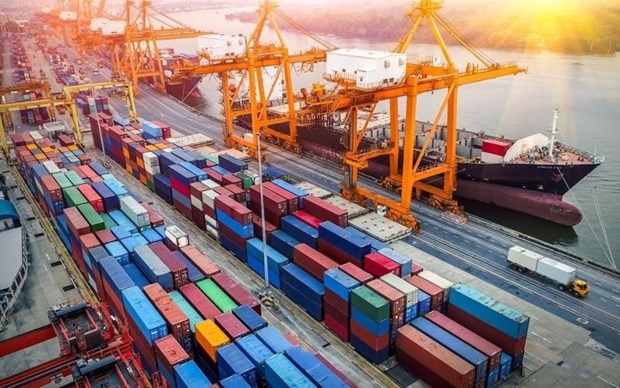
Viet Nam’s exports up 25.5% in seven months
Latest
 |
| Viet Nam’s export earnings hit 27 billion USD in July, down 0.8 percent month-on-month and up 8.4 percent year-on-year. (Illustrative photo: VNA) |
On seven-month calculation, the figure reached 185.33 billion USD, marking a yearly rise of 25.5 percent. Of which, 48.52 billion USD was from domestic economic sector, up 14.6 percent and the remaining from foreign-invested sector, inclusive of crude oil, up 29.9 percent.
Twenty-seven goods groups earned over 1 billion USD from export, or 90.2 percent of the total. Five of them brought home more than 10 billion USD, equivalent to 57.8 percent.
Export of materials and mineral resources was estimated at 1.87 billin USD, up 1.4 percent annually while that of processed industrial goods was 164.89 billion USD, up 27 percent. Agro-forestry products raked in 13.65 billion USD and fisheries 4.92 billion USD, up 16.7 percent and 12 percent, respectively.
The US remained Viet Nam’s largest importer with turnover hitting 53.6 billion USD, up 37.4 from the same period last year. It was followed by China 28.7 billion USD, up 24.2 percent and the European Union 22.5 billion USD, up 15.5 percent.
According to the GSO, imports in July was estimated at 28.7 billion USD, up 3.8 percent month on month and 29.9 percent year on year.
Seven-month imports rose by 35.3 annually to 188.03 billion USD, 66.31 billion USD of which were from domestic sector and the remaining from foreign-invested sector.
Over 1 billion USD were spent on 31 goods each, or 87.5 percent of the total imports.
China was the largest exporter of Viet Nam with a value of 62.3 billion USD, up 48.5 percent annually. It was followed by the Republic of Korea 29.7 billion USD, up 19.9 percent; ASEAN 24.7 billion USD, up 48.2 percent; and Japan 12.6 billion USD, up 13.8 percent.
The country ran a deficit of 1.7 billion USD in July, bringing the figure in seven months to 2.7 billion USD.
To boost production and exports, the Ministry of Industry and Trade pledged to tap opportunities from free trade deals, step up export promotion activities post-pandemic, as well as continue developing energy, mechanical engineering industries.
























